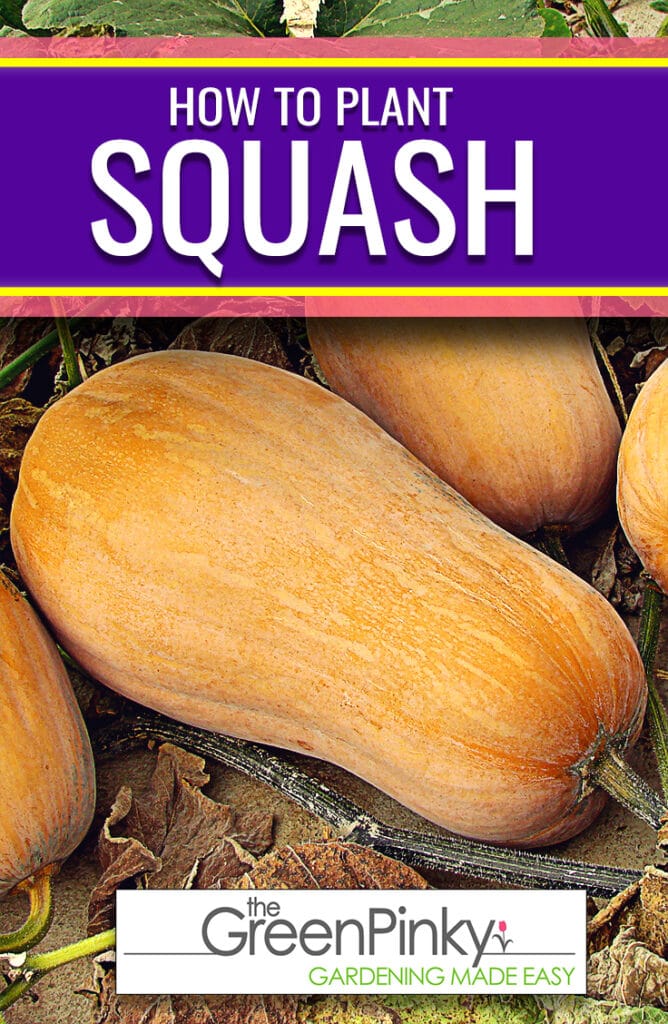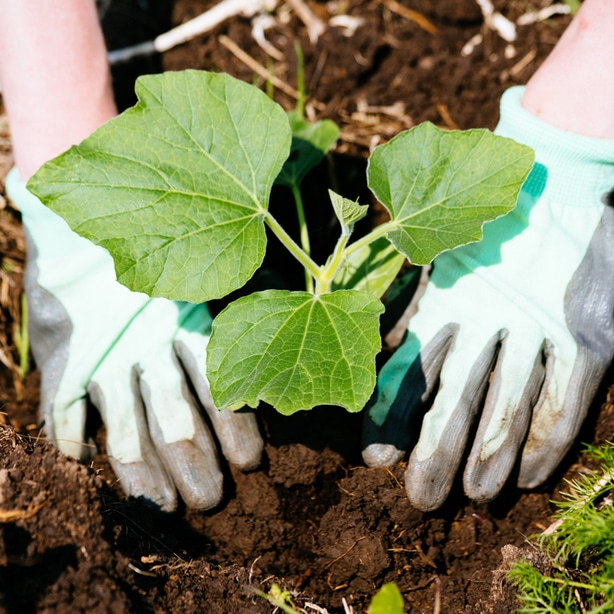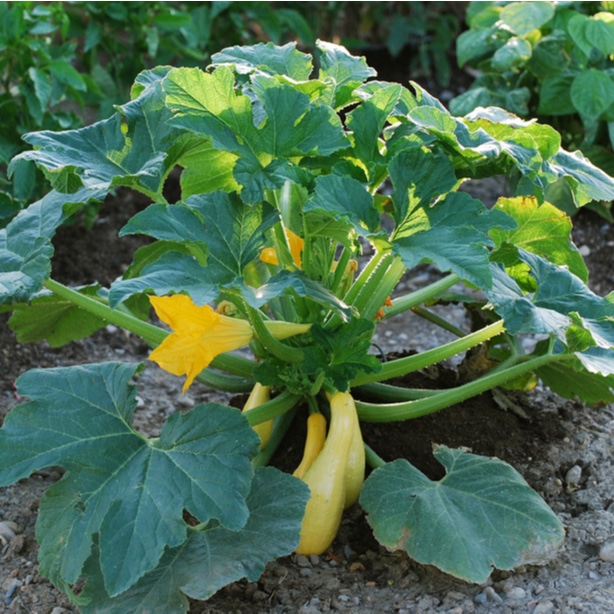If you’re looking for an easy-to-grow garden veggie, look no further than the well-loved squash.
With over 100 different types, this vining plant is grown frequently for its fleshy edible fruit. Some people also fry their blossoms for a tasty and classy treat. It falls into the gourd family that belongs to the genus Cucurbita.
Interestingly enough, it gets its name from the Native American word askutasquash, which means “eaten raw or uncooked.” Most varieties have a mild, nutty flavor with a silky texture. They can be all sorts of colors, but most typically are yellow, cream, orange, or green.
With our guide, you will be successfully growing these plants and harvesting their fruit in no time. You’ll probably have so much to make you question what to do with it all, perhaps resorting to gifting the extra to friends and neighbors.
Other than growing vegetables, make sure that you also take care of your lawn. If you have Bermuda grass, please read our bermuda grass comprehensive guide to learn how to properly manage it.

Why Plant Your Own
Whether you are a beginner or novice gardener, you should include squash on your planting list each spring. Plants are incredibly easy to grow and require very little care beyond giving them enough sunlight, water, and an occasional dose of fertilizer. A bountiful harvest provides you with plenty of nutritionally power-packed fruits that you can use in various ways.
Varieties
Squash can be divided into two different types, depending upon how quickly they mature in the season. Both types — summer and winter — are warm-season annuals that grow well in USDA growing zones 3 through 10. Summer squash is harvested when immature and has thinner skin that is edible. Winter squash has a touch, protective rind that can’t be eaten.
Summer varieties:
- Zucchini
- Pattypan
- Yellow crookneck
- Straightneck
- Cylindrical
Winter varieties:
- Hubbard
- Acorn
- Butternut
- Spaghetti
- Buttercup
Timing
Squash varieties are a warm-season crop, needing lots of sun and heat to grow. Most summer types require at least 50 to 65 frost-free days to mature. Winter types take 60 to 100 days to mature. As young seedlings are sensitive to frost, it’s best to start seeds indoors 3 to 4 weeks before the spring frost-free date.
After the chance of frost has dropped, transplant plants outside into the garden.

Soil Preparation
Plants have extensive root systems that like to spread out in the soil as they grow. Because of this, they prefer loose, well-draining soil that is easy to grow in. About a week before planting, work the soil bed to a minimum of ten to twelve inches, mixing in 3 inches of finished compost or well-rotted animal manure.
Planting
Squash is regularly planted on small hills or slight mounds similar to pumpkins. Build up 12-inch raised hills that are about 6 feet apart. Then sow 4 or 5 seeds per hill about 2 inches deep, spaced 3 to 4-inches apart in the hill. After germination, thin to the two healthiest plants per hill. If planting transplants, plant two per hill.

Care Guide
Growing squash is relatively easy, and the plants will do well even if they are slightly neglected. As long as they have plenty of sun and water, you’ll likely end up with a decent bounty regardless of how often you fertilize or if you keep the weeds at bay. The following care instructions will only boost your plants’ yields.
Sunlight Requirements
Sow seeds or plant transplants in a garden spot where they receive at least 6 to 8 hours of full sun every day. Like other garden veggies, they need a lot of sunlight to drive photosynthesis. In hot climates, plants will benefit from shade in the afternoon when the sun is the most intense.
Watering Frequency
For optimum growth, it’s essential to keep the soil evenly moist without waterlogging the roots. Aim for plants to get 1 to 1.5 inches of water weekly, whether through rainfall or supplemental irrigation. Plants may appear wilted on the afternoons of hot days, but if the soil has sufficient water, they will perk up as the temperature cools.

If you have an apple tree, you will want to check out our guide on how to properly prune apple trees.
Fertilizing
Squash plants are heavy feeders due to their intense vine growth, so they need plenty of nutrition during the growing season. Before planting, work a small amount of a slow-release fertilizer like 14-14-14 into the soil. Once the plants flower, give them another dose of food per the label recommendations. Avoid high nitrogen fertilizers; they promote vine growth versus flower and fruit formation.
Weeding
When plants are young, it’s important to keep weeds controlled to minimize competition for resources such as water, sunlight, and nutrients. Weed problems are significantly reduced once a plant grows larger and the vines begin producing leaves. The large, broad leaves shade the soil and keep it cool, minimizing weed germination and growth.
Pest Problems
The most common pest problems in garden plants are aphids, squash bugs, squash vine borers, and cucumber beetles. In areas with early-season pest problems, prevention is better than treating an infestation. Grow your plants under floating row covers, removing the netting when the plants begin blooming to allow pollinating insects access to the flowers.

Disease Issues
Plant diseases such as bacterial wilt, blight, curly top, mildew, and mosaic virus frequently plague plants. Unfortunately, once in your garden, the damage may be irreversible. To minimize diseases, choose to plant disease-resistant cultivars, control disease-spreading pests like aphids, and scout often for problems. Quickly remove and destroy infected plants once issues arise.
When to Harvest
Summer squash is harvested much earlier in the growing season than winter types. These varieties can be harvested as baby squash or allowed to grow until they are up to 6 to 8 inches long. Winter varieties are ready to harvest when the rind is tough enough to resist being punctured with a fingernail.
Using a sharp knife, cut all types with a short stub of vine attached and then wipe them with a damp cloth.

Growing Tips
- When moving transplants outside, cover them with shade cover for a couple of days to prevent wilting in sunny weather.
- If growing vertically, hills can be spaced closer together at 4 feet apart.
- Remove ripe fruits as quickly as possible to allow the plant to utilize moisture and nutrients for ripening other fruit.
- By mid-summer, if pollination hasn’t occurred, use a soft-bristled paintbrush to dust inside a male flower. Then carefully move to a female flower and dust inside to transfer pollen.
- Once fruits form, carefully slide a wooden plank or piece of plastic under them to get them up off the soil surface. This helps prevent disease and insect problems.
- In early August, remove any fruit smaller than a baseball to encourage the remaining fruit to grow as large as possible.
Companion Plants
Squash is a great companion plant in the garden, dating back to the Native Americans and early US history. It is one of the well-known “three sisters” — squash, corn, and beans planted together, so each vegetable contributes a specific benefit to the other plants. It also pairs well with other garden vegetables, herbs, and ornamental flowers that attract pollinators.
The best companion plants include:
- Beans
- Borage
- Calendula
- Catnip
- Celery
- Corn
- Marigolds
- Melons
- Mint
- Nasturtiums
- Onions
- Peas
- Petunias
- Radishes
The only plants to avoid growing them with are brassicas and potatoes.


